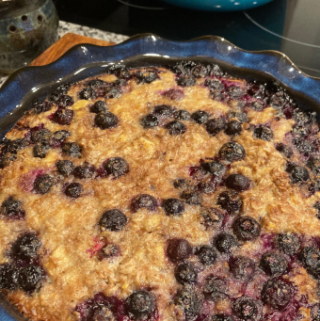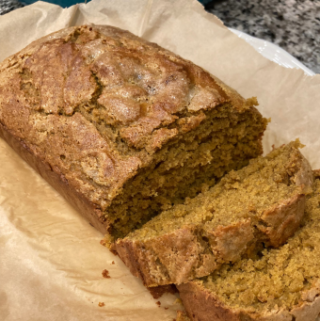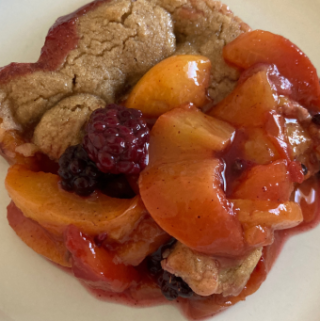Food is medicine. I believe that it’s the most powerful, accessible tool that we have at our disposal when seeking to silence (or reverse) autoimmune disease. Over the years, I’ve tried many anti-inflammatory diets. I began with the Autoimmune Protocol (AIP). Next, I tried the Specific Carbohydrate Diet (SCD) and the Gut and Psychology Syndrome Diet (GAPS). In the most recent years, I’ve used IBD-AID to specifically target and lower inflammation in the gut. In this post, I’ll explain how the IBD-AID diet works, and what makes it different from other anti-inflammatory diets. While this diet will lower inflammation for anyone experiencing the symptoms of autoimmune disease, it is specifically designed to nourish those with compromised digestion.


WHAT ALL ANTI-INFLAMMATORY DIETS HAVE IN COMMON (AND WHAT MAKES THEM DIFFERENT)
All anti-inflammatory diets have one thing in common. They each remove or limit processed food while prioritizing real food. Beyond that, each diet makes specific tweaks to cater to a niche crowd. AIP removes all foods (even “real” foods) that commonly contribute to inflammation. Then, AIP systematically reintroduces each food to test for personal inflammatory reactions. AIP can be a benefit to anyone with generalized inflammation.
Put simply, SCD removes complex carbohydrates because they are considered hard to digest. SCD was originally designed to cater to those with Crohn’s Disease or other digestive conditions. GAPS is sort of a modified SCD. It also limits complex carbohydrates, but puts more emphasis on probiotic-rich foods. It also extends its usefulness to those with concerns for brain health. So GAPS may be used for those with ADHD, Autism, Schizophrenia, Tourette’s, Bipolar disorder, or other neurological conditions, in addition to those with digestive complaints. It provides more structured “phases” than the SCD diet, so some with IBD (Inflammatory Bowel Disease) turn there for the additional support and direction.
IBD-AID is also loosely based off of SCD, but has more recent research to conform the diet to what we know (and continue to learn) about the microbiome. Like GAPS, IBD-AID makes use of specific phases to help provide direction. It also focuses on probiotic rich foods, but goes even further than GAPS by creating “The Essential Eight” to help people understand the needs of the microbiome. To better understand IBD-AID, let’s begin there.
“THE ESSENTIAL EIGHT”
To help people understand the needs of the microbiome, IBD-AID recommends that people draw their attention each day to “The Essential Eight.” People should get all eight at each meal if able. If that’s not possible, people should be sure to achieve all eight every day, spread throughout meals. “The Essential Eight” are as follows:
- Probiotic Foods
- Prebiotic Foods
- Healthy Fats
- Vegetables
- Fruits
- Lean Proteins
- Herbs
- Beverages (at least half your body weight in oz. of water. 120 lbs. = 60 oz. water daily)
This is new territory for a lot of people. I would venture to say that most Americans don’t know which foods are naturally probiotic or prebiotic foods. Most Americans don’t understand what constitutes a healthy fat or a lean protein. Like any of these anti-inflammatory diets, there is definitely a learning curve involved as one begins to change life-long habits.
THE THREE PHASES
The IBD-AID diet takes the entire list of allowable foods and splits them into three phases. Phase One is meant to be used when the gut is showing signs of distress. So if there is bleeding or pain or urgency, Phase One is the place to be. The foods allowed on Phase One are considered the easiest to digest. But aside from allowable foods, the texture of the foods is so important. As far as I’m aware, this is the only anti-inflammatory diet that defines textures so clearly. So when I was at a point of digestive distress, I found IBD-AID to be more useful than SCD for that reason alone. During phase one, all things consumed should achieve a “silken texture.” Think smoothies, along with other blended soups and foods.
Phase Two introduces new foods, but it also expands the texture recommendations. In Phase Two, more fiber is introduced into the diet. Textures should be soft-cooked. This phase is for people who are healing from digestive distress. Symptoms are not consistent. There may be days with no symptoms at all. This is a hard place to be, I think. When you start to feel better, you want to eat all the foods, regardless of phase or texture. Holding to Phase Two takes discipline, but allows time for healing to continue.
Phase Three is meant for people living in remission. It has the widest list of allowable foods. Crunchy textures and fried foods are allowed depending on individual tolerance. It is recommended, that even in remission, a person keeps the the IBD-AID food list for at least 80% of their diet. Throughout all three phases, “The Essential Eight” are to be applied with the allowable ingredients for a person’s specific phase.



THE PHASE ONE WOES
Phase One is quite limiting. There are not many foods “allowed” when digestive distress is severe and persistent. However, if one can have the discipline to stick to the suggested Phase One foods, symptoms will likely dissipate quickly.
Yes, you will probably get sick of smoothies.
You will likely crave something to chew.
You will have a hard time watching other people eat foods that you are craving.
It’s hard. But there is value in doing hard things. There is healing in this kind of “hard.” And hard can bee good too. This Phase One Chocolate Mint Smoothie is a favorite of mine all the time.



IBD-AID SHOULD BE CATERED TO INDIVIDUAL NEEDS
Some anti-inflammatory diets seem so strict that there’s no room to deviate from the instructions. IBD-AID should be used as a guide, but sometimes personal, individual modifications need to be made. For example, eggs are allowed in Phase One. They are supposed to be very easy to digest. When I am in Phase One, eggs cause me excruciating pain. Personally, I have to eliminate them while I’m healing.
Another example would be that of FODMAPs. “FODMAP” stands for fermentable oligosaccharides, disaccharides, monosaccharides and polyols, which are short-chain carbohydrates (sugars) that the small intestine typically absorbs poorly. There’s no way to recognize a High-FODMAP food by sight. You would have to consult a list like this one. When I am in Phase One, I don’t tolerate onions, garlic, mushrooms, or honey. These are healthy, whole foods (and Phase One approved), but when I am experiencing digestive distress, my microbiome cannot digest them. They cause me great pain and almost comical (visually noticeable) bloating.
When traveling through the phases, one needs to be quite in tune with their body. Hard and fast rules may need to be bent or broken to achieve personal healing. That said, these “rules” are the best guide I have ever found for healing the microbiome. The don’t just restrict certain foods, but they direct the individual in how to nourish the body.
IBD-AID RESOURCES
The IBD-AID Diet was designed by the University of Massachusetts. They continue to research its effectiveness. They do have quite a few resources that I’ll link below. While they have published a few free recipes for each phase, I don’t find them to be especially appealing. As I was traveling through the phases, I generally developed my own recipes using the allowable ingredients and textures. I’ve recently begun work on a new cookbook that will help people to move through the phases while enjoying (as much as possible) the options available to them at each moment in time.
This diet has worked miracles of healing in my life. Food is medicine. How beautiful that God created something so natural, so healing, and placed it before us as daily sustenance. Our culture has gotten lost. We need to turn back to the bounty God meant for our nourishment.
I will continue to champion this diet for years to come. Its very structure teaches people how to turn toward real food for healing. Here are the IBD-AID links found on the UMASS website:
MEAL PLANS (Not my favorite, but helpful for beginners.)
Also, this Facebook group is super helpful if you need a live (free) support group:






Leave a Reply
You must be logged in to post a comment.